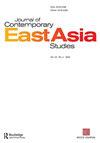Preferential policies for China’s ethnic minorities at a crossroads
IF 1.4
Q1 AREA STUDIES
引用次数: 5
Abstract
ABSTRACT Background: The Chinese government’s principle of regional ethnic autonomy has remained consistent since the founding of the PRC in 1949. However, some voices within the country are calling on the government to rethink the principle of ethnic autonomy. Purpose: This paper discusses two examples in support of the hypothesis that the system favoring ethnic minorities under the regional autonomy system implemented since the foundation of modern China has reached a turning point. Main Argument: The first example describes the government’s handling of ethnic minority issues, in particular the July 2009 disturbances in Urumqi in the Xinjiang Uyghur Autonomous Region. The second outlines the political discussion of the regional ethnic autonomy system, with open discussion in the past few years about changing the system advanced by an individual formerly directly involved in formulating and implementing ethnic policies. Conclusion: The first example demonstrates that the government’s policy of expanding preferential measures favoring ethnic minorities in order to stabilize restive autonomous regions has become untenable. The second highlights that the government’s confidence in its hard-line measures, even to the extent of allowing open discussion within China of whether the regional ethnic autonomy system should be reevaluated. This paper’s conclusion is that preferential policies for China’s ethnic minorities are at a crossroads.十字路口的中国少数民族优惠政策
摘要背景:中华人民共和国成立以来,中国政府的民族区域自治原则始终如一。然而,国内一些声音呼吁政府重新思考民族自治的原则。目的:本文讨论了两个例子来支持这样一种假设,即中国近代成立以来实行的区域自治制度下的有利于少数民族的制度已经达到了转折点。主要论点:第一个例子描述了政府对少数民族问题的处理,特别是2009年7月在新疆维吾尔自治区乌鲁木齐发生的骚乱。第二部分概述了对民族区域自治制度的政治讨论,在过去几年中公开讨论了改变以前直接参与制定和执行民族政策的个人提出的制度。结论:第一个例子表明,政府为稳定动荡的自治区而扩大有利于少数民族的优惠措施的政策已经站不住脚。第二个强调了政府对其强硬措施的信心,甚至允许在中国内部公开讨论是否应该重新评估民族区域自治制度。本文的结论是,中国的少数民族优惠政策正处于十字路口。
本文章由计算机程序翻译,如有差异,请以英文原文为准。
求助全文
约1分钟内获得全文
求助全文
来源期刊

Journal of Contemporary East Asia Studies
Social Sciences-Cultural Studies
CiteScore
2.50
自引率
0.00%
发文量
10
审稿时长
6 weeks
 求助内容:
求助内容: 应助结果提醒方式:
应助结果提醒方式:


